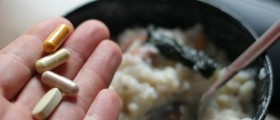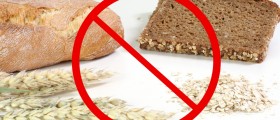
Lactose intolerance, also known as lactase deficiency, is the inability to the metabolize lactose. This actually means that person with lactose intolerance won’t be able to fully digest the lactose, or milk sugar, from dairy products. Lactose intolerance is caused by a deficiency of the enzyme lactase, normally produced in the small intestine. The role of lactase is to break down lactose into simple sugars called glucose and galactose. In an uninterrupted process of digestion, these simple sugars are absorbed into the bloodstream.What are the symptoms of lactose intolerance?
It is estimated that approximately 75% of adults worldwide suffers from lactose intolerance. However, it is not so usual to hear somebody complaining about lactose intolerance. It is because most of the people still can produce small amounts of lactase and therefore can tolerate certain amounts of lactose.
Symptoms occur approximately half an hour after eating the lactose containing foods and they include: diarrhea, nausea, abdominal cramps, bloating and gas. Symptoms are usually mild, but they may vary from person to person. Depending on the severity of the symptoms, milk products might have to be completely eliminated from the diet, or just restricted.Is it the same as the milk allergy?
The answer is no. The main difference between food intolerance and food allergy lies in completely different set of reactions that can cause the same or similar symptoms. Generally, a true food allergy is a reaction of our immune system to certain food. In the case of allergy, the body mistakenly identifies a food as a harmful substance and releases histamine and other chemicals into the bloodstream. This chemical rush causes the symptoms of an allergy.
Food intolerance, on the other hand, is most commonly caused by the absence of an enzyme needed to digest the food. The symptoms occur because of the inability to process the food normally.
Managing the lactose intolerance
Persons able to tolerate lactose in small amounts should restrict their milk intake to one cup or less, and preferably consume it with other foods. It is advisable to use hard cheese, because it is lower in lactose. Yogurt with active cultures may also help to digest milk. Lactase enzyme tablets are also available and they can be used before eating, or in a liquid form added to regular milk.
Calcium, found in milk, is one of the most important minerals essential for healthy bones and teeth. Lactose-reduced milk is also available and it contains the same amounts of important nutrients. Other natural sources of calcium are broccoli, kale, canned salmon with bones, calcium-fortified breads and tofu.

















Your thoughts on this
Loading...